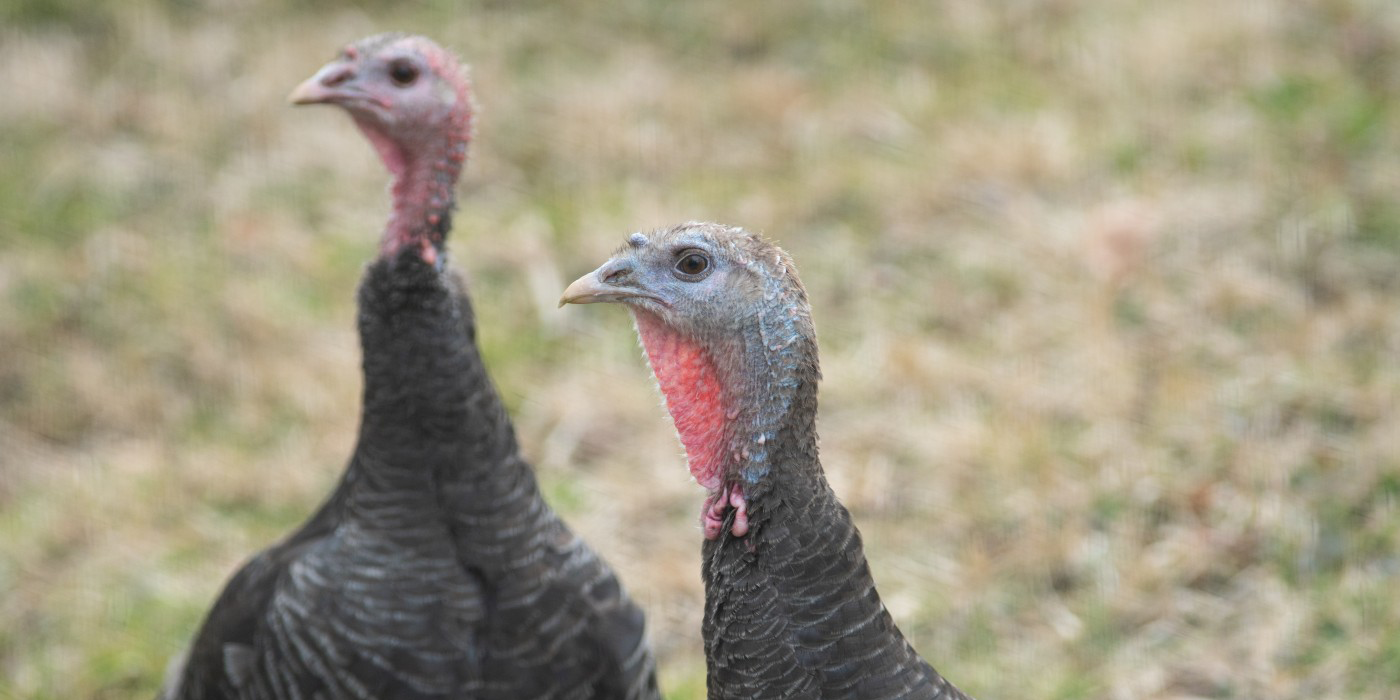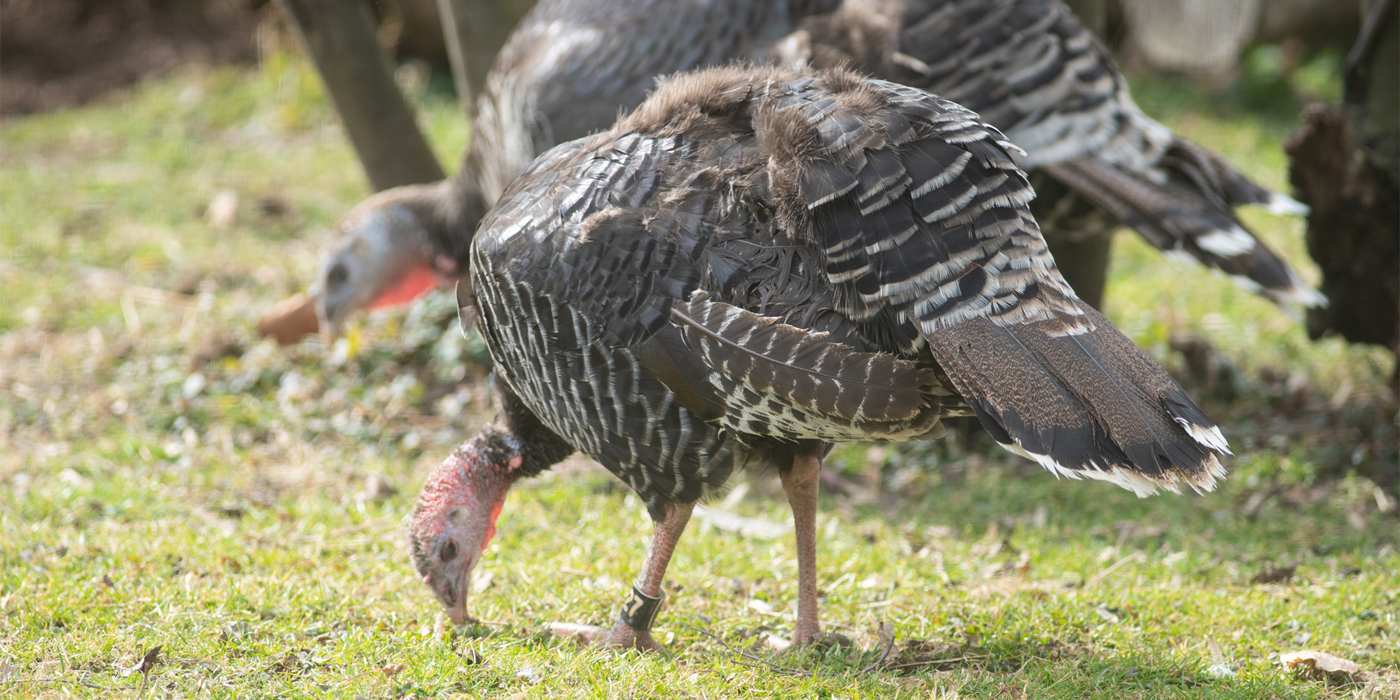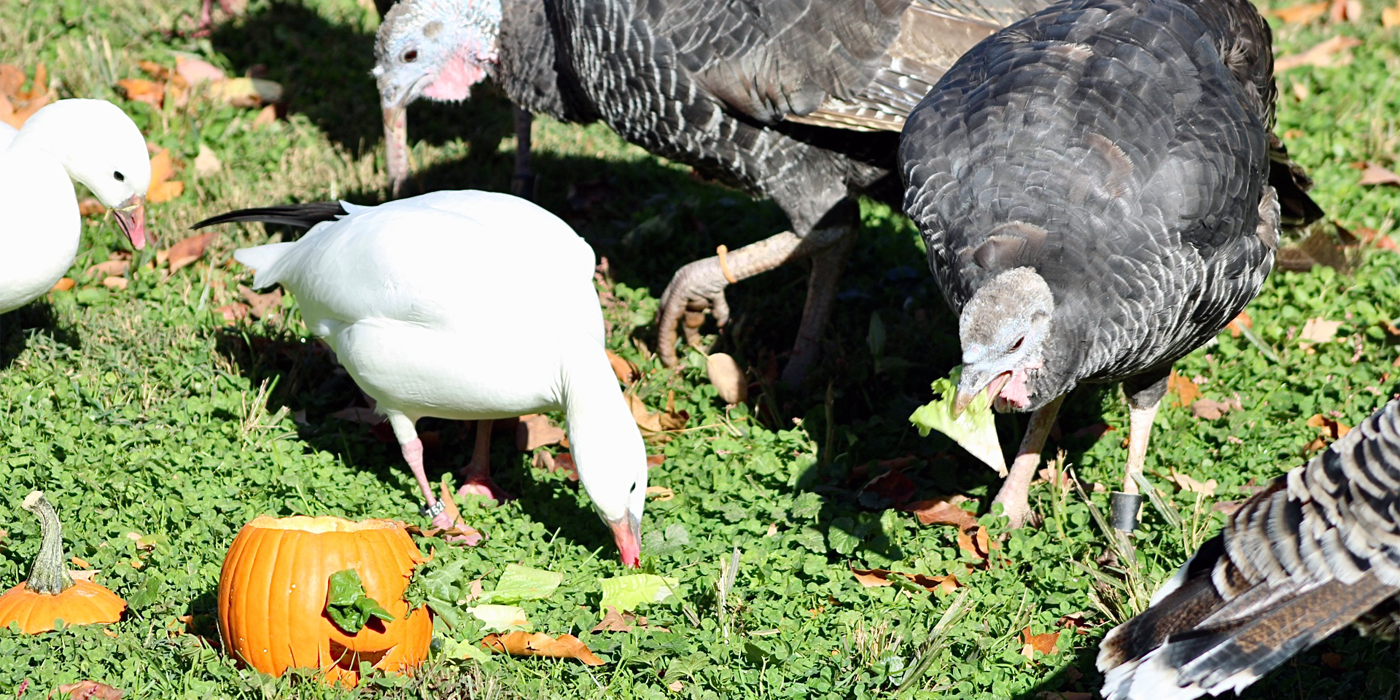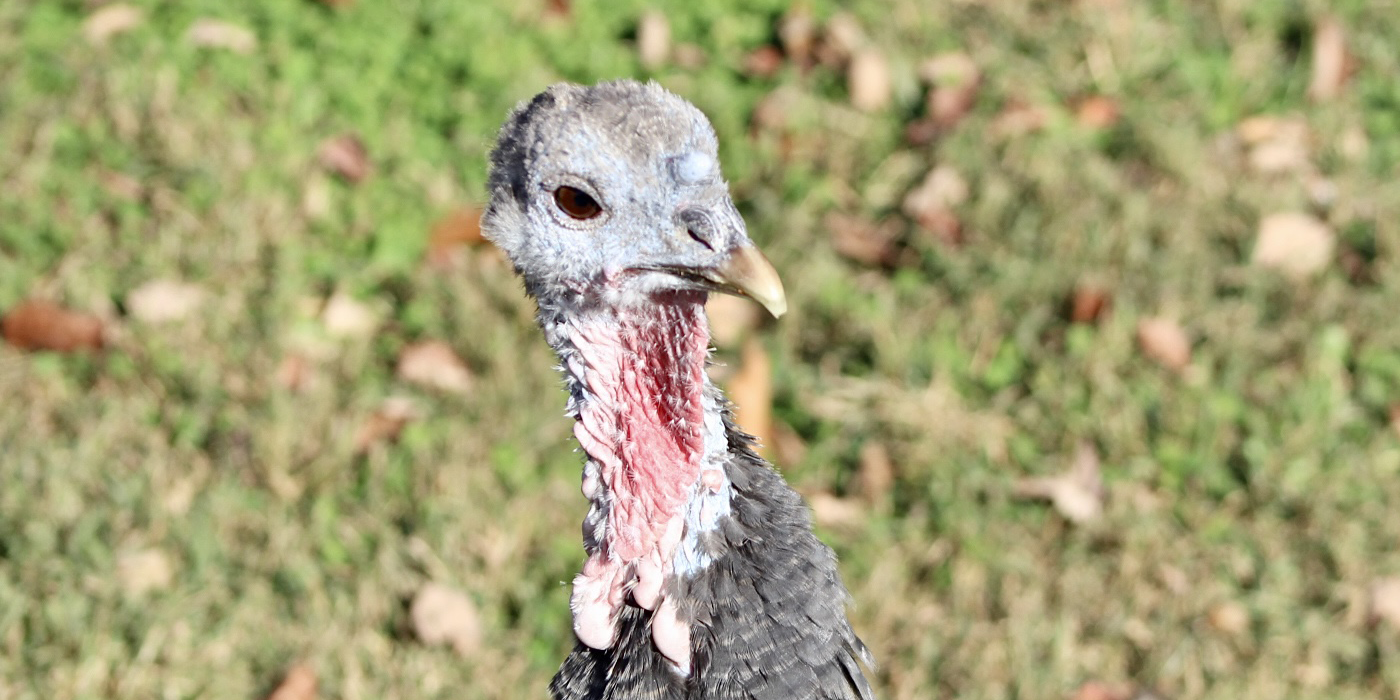Talking Turkey: Q&A With a Bird House Keeper

This holiday season, the Smithsonian's National Zoo and Conservation Biology Institute invites you to give thanks to a beloved American icon—but not at the dining room table.
Ever since their ancestors were first domesticated in Mesoamerica more than two thousand years ago, turkeys have been one of the most famous and iconic North American birds. Learn what it takes to care for the Zoo’s six turkeys in this interview with Bird House keeper Jen Ferraro.
What kind of turkeys are at the Bird House?
The Zoo has two breeds of domestic turkeys: standard bronze turkeys and broad-breasted turkeys. Both are heritage breeds, which were once common throughout farms and homesteads throughout what is now the United States. Many heritage breeds have origins tracing back hundreds of years.
Broad-breasted turkeys are a common commercial turkey. They have large, heavy bodies, and because they grow fast, they’re often raised on poultry farms. Standard bronze turkeys, named for the copper-colored sheen of their feathers, are less common nowadays. They trace their origins back to when a population of domestic turkeys interbred with Eastern wild turkeys in North America. They look very similar to wild turkeys.
Both breeds can be raised for poultry meat, but they are also increasingly being raised as pets and emotional support animals.
How many turkeys are at the Zoo? How do you tell them apart?
We have six female turkeys: Rosemary (or Rose), Thyme, Sage, Parsley, Felicity and Blanche. Rose is our big girl; she’s the one member of the broad-breasted subspecies, which makes her larger than her standard bronze flock mates. Each bird has its own personality…one bird really likes carrots, one takes off running when she gets a treat, and one is more vocal than the others.
Physically, we can identify them through a couple methods: the easiest is by looking at the colored bands they wear on their legs. The other is a little more subtle. If you look closely at their faces, you’ll notice a little horn above their beak. That’s called a snood. Each bird has a totally unique shape of their snood!

The snood is the small fleshy bump above the bird's beak. Female turkeys have small snoods, while males usually have large ones.
What is their Zoo habitat like? Why are there geese and cranes in the exhibit?
In the wild, hundreds of species of birds use grassland areas in the middle of the North American continent as rest stops during their seasonal migration between breeding and overwintering grounds. The Prairie Pothole exhibit, located inside the Zoo’s Bird House, represents one of these grassland ecosystems, and the turkey's outdoor yard is an extension of that exhibit theme.
Complex habitats like these play a critical role in the phenomenon of bird migration, and in the wild, turkeys are year-round residents of these areas. The yard is furnished with grasses, reeds, small ponds, dusty patches and shelter areas for our birds to take advantage of. Our turkeys are very social and get along well with their fellow flyway residents—like the Ross’s geese and sandhill cranes that cohabitate with our turkeys. They’re especially good-natured with the geese and will participate in communal preening of each other’s feathers. They often behave like one big flock.
What’s it like caring for turkeys?
These are some of my favorite birds in our care. They’ve been a real pleasure to work with. They’re very curious birds, and they each have such wonderful, unique personalities. They’re a fantastic animal to have at the Zoo.
When we clean the yard or put out food, they’ll follow us around. They’re super social. These turkeys are also very friendly towards Zoo visitors. They’ll often come right up to the fence and interact with guests, which makes them very popular!
They love exploring their exhibit and love dustbathing. They use their sharp nails to dig holes throughout the exhibit yard and then roll around in the dirt. We do a lot to keep them busy with enrichment, which involves encouraging their natural foraging behaviors by placing foraging trays and puzzle feeders throughout the exhibit yard. Our goal is to keep them active in their environment.

Enrichment—like this pumpkin-turned-puzzle feeder—gives the turkeys and geese a creative outlet for physical activity and mental exercise.
What are the differences between domestic and wild turkeys?
Domestic turkeys are very closely related to wild turkeys. The differences mainly involve personality and temperament, as well as physical features like size and feather color.
Most breeds of domestic turkey were created for the food industry, so they have different distributions of musculature and fat than their wild counterparts. Domestic turkeys are often big and too heavy to fly, whereas wild turkeys are great fliers, so their bodies tend to be leaner and nimbler. In fact, wild turkeys are capable of flying at speeds up to 54 miles (86 kilometers) per hour!
Where do the nearest wild turkeys live?
Eastern wild turkeys are fairly common in woodland areas throughout the Eastern United States, including in the Washington, D.C. area. In fact, a small population lives nearby in Rock Creek Park. They like to roost in the tall trees near the Zoo. In fact, just a few weeks ago, our girls heard a wild turkey calling from a tree outside the Bird House!
Zoo guests probably won’t see many wild turkeys roaming the park because unlike our girls, those birds tend to be shy around humans. But we do occasionally get calls from Zoo visitors who see a wild turkey and think they’re one of ours.
What role do turkeys play in their environment?
They’re wonderful pest managers. Both wild and domestic turkeys eat ticks, mosquitoes, grasshoppers and other bugs that can be destructive to both commercial crops and local flora. Farmers will rotate their domestic turkeys through crop fields to help reduce the number of pests on their land. Wild turkeys also help shape the landscape by consuming and defecating seeds throughout their habitat, which helps plants and other wildlife thrive.
What do the Zoo’s turkeys eat?
Our turkeys eat a specially formulated pellet diet provided by the Zoo’s Department of Nutrition, but they also eat fresh produce and treats! They love greens, corn, peas and especially carrots… and I mean, they really love the carrots. Our turkeys also get mealworms, but they prefer to hunt and forage for worms and grubs that live in the grassy parts of their yard.
In the wild, turkeys eat pretty much anything. They are omnivores, and eat fruits, grasses, insects, nuts, seeds, spiders, snails and occasionally small animals. You might see them in foraging flocks along forest edges and roadsides.
What are the challenges of caring for turkeys?
Well, they’re very curious birds. If I’m cleaning the pool or raking the yard, they’re often right there next to me. They like to get in your way. They want your full attention all the time.
And if they’re curious about something, they’ll walk right up to it and give it a few pecks. But because they’re so curious about everything, this means they love to tear up the yard and rip up the plants. We end up doing a lot of maintenance and landscaping in their yard!

Turkeys are naturally inquisitive animals, and love exploring their habitat areas.
What is your most special turkey memory?
It involves my favorite turkey, Dorothy, who recently passed away. Earlier this year, I was out in the yard raking leaves and putting them in a pile and had to get down on my knees. At that moment, Dorothy went right up to me and climbed in my lap and just sat there for a while. It was so sweet!
My other favorite moment is just whenever I walk into the yard with food and say “Girls!” and they all run up to you and say hello. They’re remarkably friendly and endearing animals, and it’s been a pleasure learning about their husbandry and heritage. You can’t help but smile when you work with them. They always brighten your day.
What is the #1 thing visitors should know about these birds?
I hope that when Zoo visitors meet our turkeys and see how friendly and endearing they are, they’ll think a little deeper about where their food comes from. Humans depend on farm animals for food, and in many ways, those farm animals rely on us.
In the wild, turkeys have an important role to play in their environment. Humans do, too. Maybe by getting to know these birds a little better, guests can reflect on what they can do to care for animals, the environment and each other.
Visitors can see the Zoo’s turkeys in their exhibit outside the Bird House! Swoop over to the Bird House’s outdoor yards on Saturdays at 10:30 a.m. and chat with our animal care experts as they feed and care for these charming and iconic animals.
Related Species: